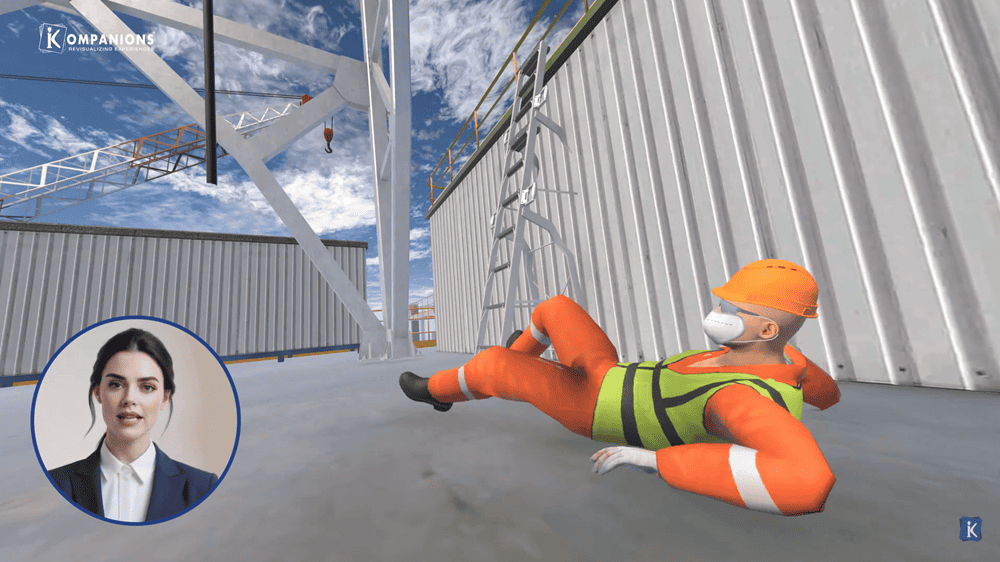Top 5 Modern Technologies Transforming Construction Safety Training

The construction industry has always been one of the most physically demanding and hazardous sectors. Despite advancements in materials and tools, construction sites still see a high number of accidents and injuries. According to the U.S. Bureau of Labor Statistics, over 1,000 construction workers lost their lives on the job in 2022, making it one of the deadliest industries in America.
Improving safety isn’t just a compliance issue—it’s a matter of protecting lives and reducing operational disruptions. That’s where modern technology steps in, bringing forward tools that make construction safety training more practical, engaging, and effective.
Below are five modern technologies that are reshaping how safety training is conducted on construction sites.
1. Virtual Reality (VR) Training Modules
Simulated learning without real-world risk.
Virtual reality has changed how teams prepare for risky environments. With VR safety training, workers can now experience dangerous scenarios—like working at heights, handling machinery, or navigating confined spaces—without stepping into harm’s way.
Benefits:
- Mimics real-site hazards with full immersion.
- Improves retention through experiential learning.
- Tracks individual performance and highlights weak points.
Example: A construction firm in Texas reported a 43% drop in onsite incidents after rolling out VR safety training for their crane operators and scaffold workers.
“It’s like learning how to swim in a pool before going into the ocean,” said one safety officer.
Many companies are now adopting VR safety training solutions to supplement their existing safety protocols, especially for onboarding new employees.
2. Wearable Safety Tech
Real-time data for proactive response.
Wearables are no longer just fitness accessories. In construction, devices like smart helmets, connected vests, and biometric wristbands are making worksites safer. These gadgets monitor environmental conditions (like gas exposure or temperature) and vital signs (like heart rate or fatigue levels).
Applications Include:
- Alerting supervisors about heat stress or exhaustion.
- Detecting falls or impact events.
- Tracking worker location in real-time.
Stat: A study by Dodge Data & Analytics found that 62% of contractors who used wearable devices reported fewer jobsite injuries.
These insights help supervisors act before an incident occurs, making safety management less reactive and more predictive.
Related post: Challenges in Construction Equipment
3. Drones for Site Surveillance
Bird’s-eye views for ground-level safety.
Drones provide an overhead perspective that no human can. In safety training, recorded drone footage helps illustrate real examples of risky behavior or compliance gaps.
Drones Are Used To:
- Survey high-risk areas before sending in workers.
- Monitor daily site conditions.
- Capture footage for later analysis during safety reviews.
Use Case: A firm in Florida uses drone footage weekly in their safety huddles to highlight both good and poor practices. This visual reinforcement helps crews better understand and remember safety protocols.
In addition, drones can access remote or dangerous areas quickly—cutting down the need to expose inspectors or trainers to unnecessary risk.
4. Digital Twins for Scenario-Based Learning
A virtual copy to learn from without real-world consequences.
Digital twin technology creates a virtual replica of a physical site. When paired with training software, these replicas allow trainees to explore job sites and simulate operations.
Why It Matters:
- Workers can rehearse procedures before executing them.
- Trainers can simulate emergency responses and check decision-making.
- Enables remote safety audits without being on-site.
Insight: Companies using digital twins have seen a 25% boost in safety audit compliance according to a McKinsey construction technology report.
Digital twins paired with VR safety training solutions are becoming a strong combination for companies aiming to bridge the gap between knowledge and practice.
5. Augmented Reality (AR) Safety Overlays
Layering instructions directly into the worker’s field of view.
AR tools are now being integrated into smart glasses or mobile devices. These tools project real-time information—like hazard zones, operational instructions, or equipment data—right onto the job site.
AR Safety Training Features:
- Step-by-step safety instructions during equipment use.
- Visual hazard alerts when entering dangerous zones.
- Live feed to supervisors for remote guidance.
Stat: The AR market in construction is projected to grow by 38% annually, as companies shift from traditional instruction manuals to immersive, on-site guidance.
Why Modern Technology Matters in Construction Safety Training
Construction work is high-risk by nature. These technologies offer a more practical, visual, and data-driven approach to training.
Quick Comparison Table:
| Technology | Use Case | Training Benefit |
| VR Training | High-risk simulations | Improves retention & engagement |
| Wearables | Monitoring worker health | Prevents fatigue & accidents |
| Drones | Surveillance and footage analysis | Enhances situational awareness |
| Digital Twins | Scenario-based training environments | Supports rehearsals and planning |
| AR Overlays | In-field instructions and alerts | Increases real-time decision making |
Final Thoughts
Incorporating modern tools into construction safety training doesn’t mean replacing human instruction—it means enhancing it. From VR safety training to digital twins and wearable tech, these innovations bring real value in terms of cost savings, fewer accidents, and improved confidence on the site.
The future of safety in construction lies in practical, scalable, and tech-assisted learning. Companies that start early will not only meet compliance but also earn the trust of their workforce.If you’re evaluating options to improve your training program, now is the right time to explore VR safety training solutions or pilot wearable tech across your teams. Modern safety isn’t just about gear—it’s about getting smarter with how we train, prepare, and respond.